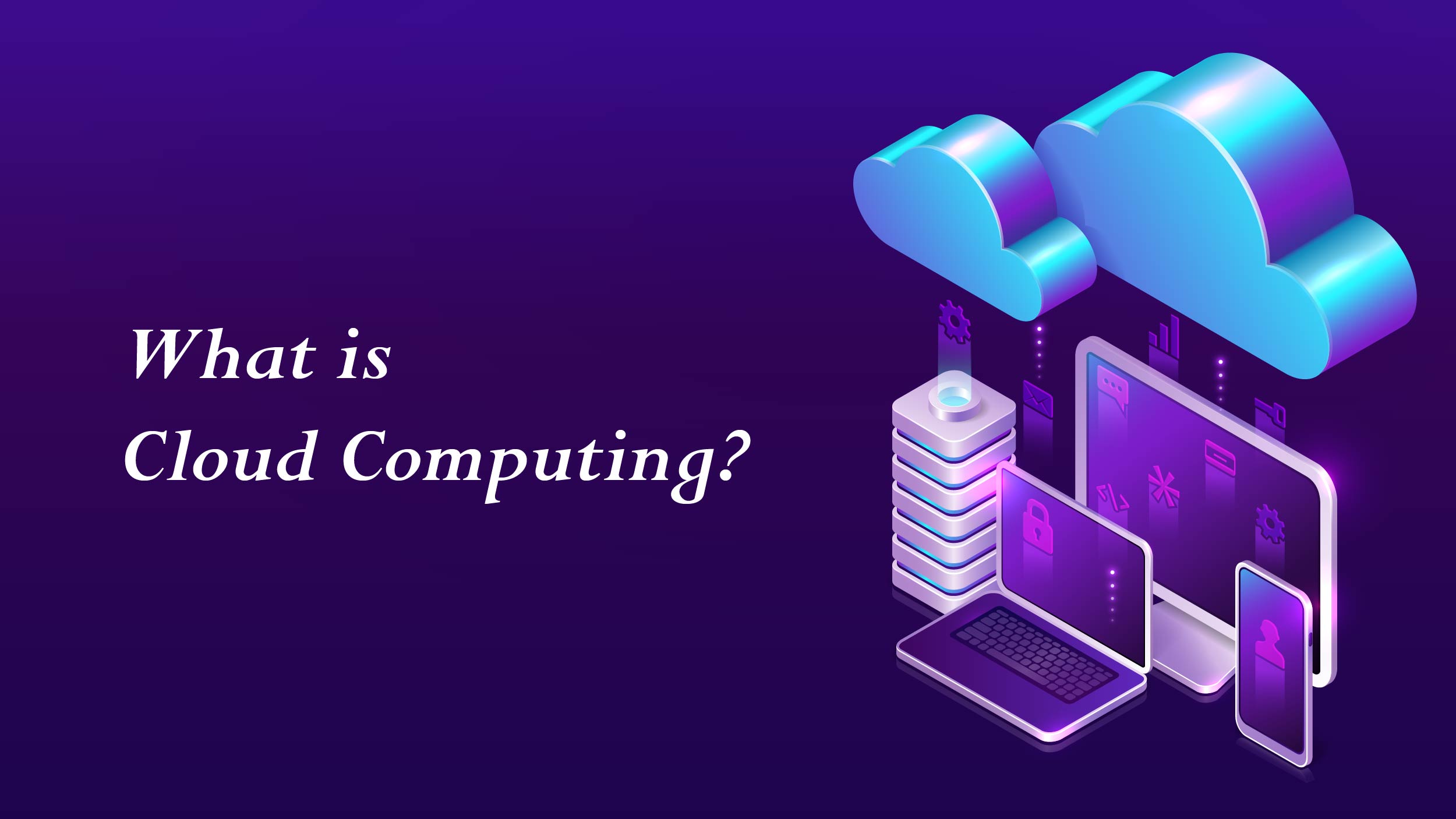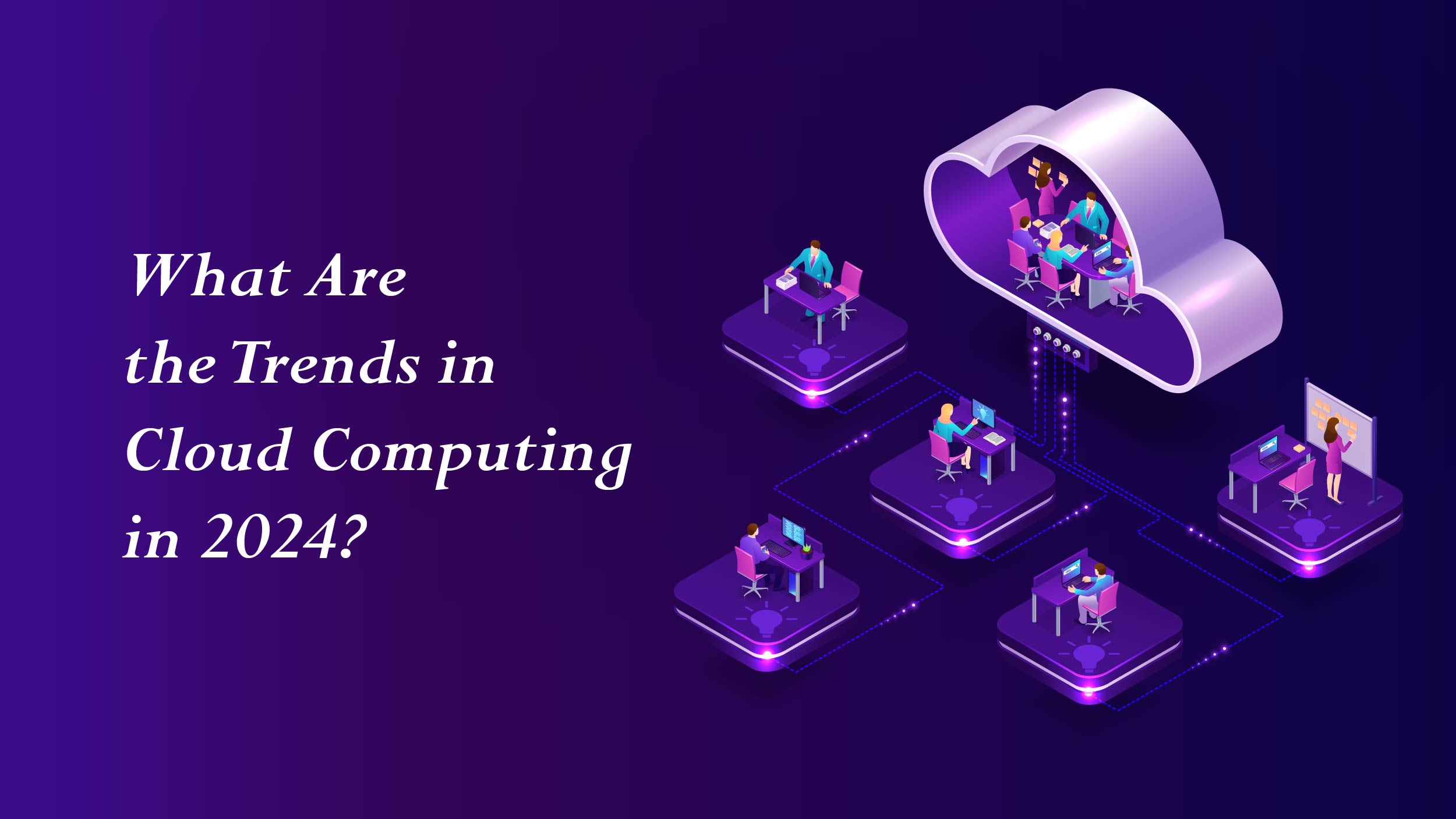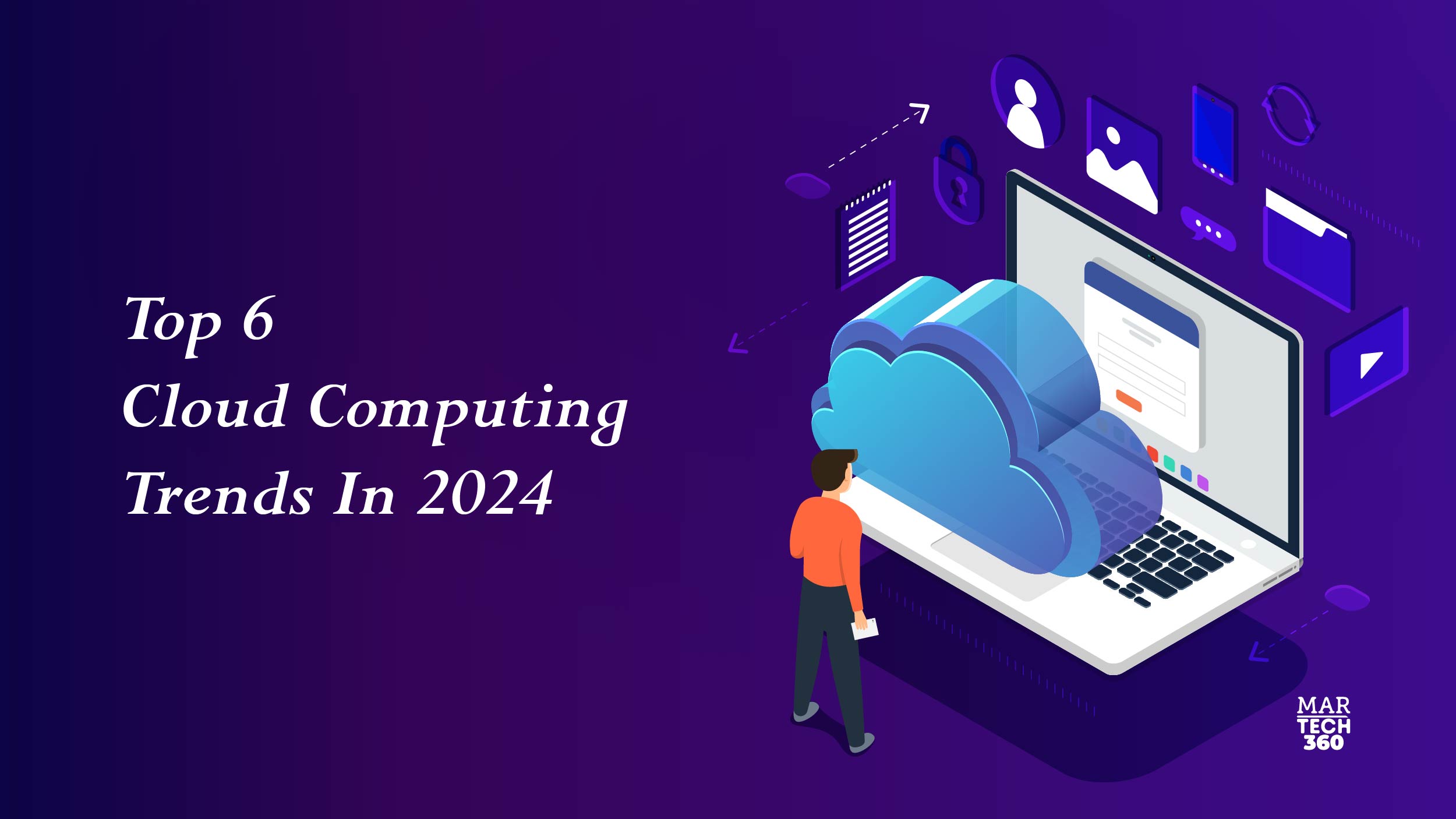Entering 2024, the realm of cloud computing undergoes continual transformation, holding the promise of captivating technological progress and inventive breakthroughs. This year stands as a pivotal juncture where trends in cloud computing are poised to reshape industries. Ranging from the infusion of artificial intelligence (AI) into cloud services to the growing embrace of serverless computing, cloud computing trends revolutionize the operational landscape and service delivery for businesses.
Noteworthy shifts include heightened security measures, the expansion of edge computing, and the ascendance of hybrid and multi-cloud approaches, ushering in transformative changes that empower organizations to harness unprecedented levels of agility, scalability, and efficiency. A comprehensive understanding of these trends is imperative for unlocking the full potential of cloud computing in the approaching year.
What is Cloud Computing?
 Cloud computing is a system that offers computing resources (such as servers, storage, databases, and software applications) over the Internet as opposed to relying on local hardware and infrastructure. This implies that users can conveniently access these resources from any location, at any time, using any device with an internet connection.
Cloud computing is a system that offers computing resources (such as servers, storage, databases, and software applications) over the Internet as opposed to relying on local hardware and infrastructure. This implies that users can conveniently access these resources from any location, at any time, using any device with an internet connection.
Now that we know what cloud computing is, let’s take a closer look at the cloud computing trends 2024 that you should be aware of.
Also Read: 5 Key Practices You Need to Know About Search Engine Marketing
What Are the Trends in Cloud Computing in 2024?
 The importance of cloud computing for business owners is growing and it is a must that businesses stay up-to-date about all the emerging trends in cloud computing. Here are the top 6 cloud computing trends and future predictions you shouldn’t ignore:
The importance of cloud computing for business owners is growing and it is a must that businesses stay up-to-date about all the emerging trends in cloud computing. Here are the top 6 cloud computing trends and future predictions you shouldn’t ignore:
1. AI As-A-Service
Cloud infrastructure plays a significant role in making AI available to the masses, along with all the economic and social benefits that it’s expected to generate. AI models, such as the large language model (LLM) that powers ChatGPT, are trained on huge amounts of data, using vast amounts of compute power. Most businesses don’t have the resources to do this themselves, but by accessing AI-as-a-service through cloud platforms, they can leverage this powerful, transformative technology.
2. Hybrid And Multi-Cloud
The anticipated increase in the adoption of a multi-cloud strategy among major enterprises, driven by cloud computing trends, wherein they procure cloud services from multiple providers, is projected to grow considerably in the years to come. While this approach presents cost savings and enhanced flexibility, it introduces challenges in terms of data governance and the integration of cloud services with existing legacy systems. The rising prominence of multi-cloud and hybrid cloud solutions, which involve a combination of cloud and on-premises infrastructure, reflects the evolving landscape as organizations strive to strike a balance between security and flexibility while selectively opting for the services that align with their requirements.
3. Real-Time Cloud Infrastructure
In 2024, businesses will increasingly seek to harness real-time data for immediate insights, moving away from reliance on outdated information. Simultaneously, the predominant data consumption, influenced by cloud computing trends, will shift towards streamed content, encompassing movies and music from platforms like Netflix and Spotify, video data from communication tools such as Zoom or Teams, and emerging forms of entertainment like cloud gaming. Consequently, there will be a growing demand for cloud storage solutions that prioritize instantaneous access, such as Flash and solid-state storage devices, among cloud users.
4. Cloud-Driven Innovation And Transformation
In addition to the previously mentioned AI, staying abreast of cloud computing trends can serve as a pathway to various other revolutionary technologies like the Internet of Things (IoT), blockchain, and quantum computing. The elimination of the necessity to directly invest in architecture and infrastructure enables businesses to swiftly initiate projects with the potential for quick wins or rapid failure. This facilitates a more straightforward evaluation of the advantages offered by emerging technologies in 2024, all made possible by the convenience of cloud computing.
5. Cloud Security And Resilience
In the ever-changing threat landscape of 2024, the demand for encryption, authentication, and disaster recovery in cloud computing services, driven by cloud computing trends, is on the rise. The escalating frequency and severity of data thefts and breaches, fueled by the emergence of AI-powered attacks, underscore the need for robust security measures. Recognizing that systems accessible to humans are susceptible to social engineering attacks, both cloud providers and customers prioritize security and resilience as top priorities.
6. Sustainable Cloud Computing
The big cloud service providers have all made net-zero commitments, not just for their own operations but in order to help customers who use their services to reduce their carbon footprints. Cloud computing trends in sustainability are evident as Amazon has pledged to achieve zero emissions by 2040, and Microsoft aims to beat this by ten years. Along with Google, they have also all stated their intention to generate 100 per cent of the energy used in their operations from renewable sources. Whether they make it remains to be seen, but the push for greener and less environmentally impactful cloud computing will be a strong trend in 2024.
Final Thoughts
The evolving landscape of cloud computing trends and innovation presents a dynamic and transformative future for businesses and individuals alike. As we delve into the digital era, the increasing adoption of edge computing, the rise of serverless architectures, and the commitment to sustainability by major cloud service providers are shaping the way we harness and utilize computing resources. The integration of artificial intelligence, cybersecurity advancements, and the ongoing pursuit of innovation within the cloud ecosystem further solidify its pivotal role in our technological journey.
It’s evident that cloud computing will continue to drive efficiency, flexibility, and scalability, ushering in a new era of possibilities for organizations willing to embrace and adapt to these ever-evolving trends. As we stand on the cusp of this technological revolution, staying abreast of cloud computing trends is not just a choice but a strategic imperative for those seeking to thrive in the digital future.


Comments are closed.